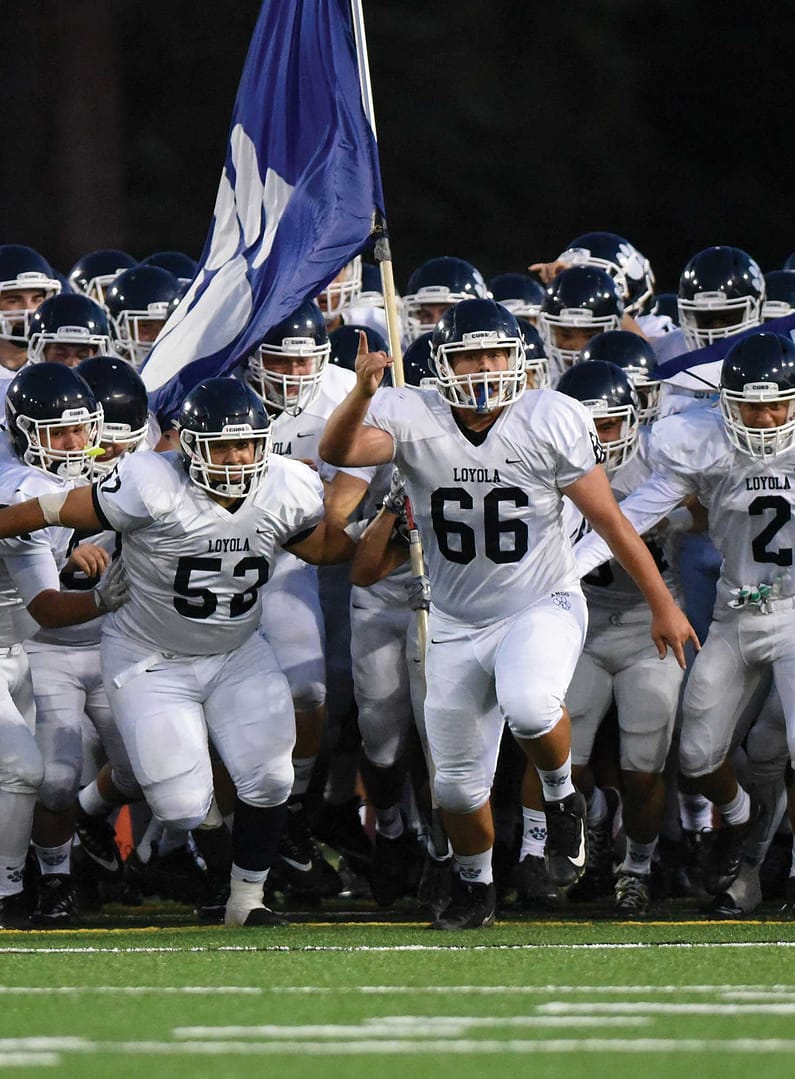GOEPEL’S AP U.S. HISTORY STUDENTS use PowerPoint to analyze course material. Goepel includes facts, statistics and visuals in his presentations.
Teachers are learning new ways to engage students through technological media. As students show a growing interest in various technological platforms, teachers are beginning to incorporate different technological sources.
Latin teacher Teresa Kawamata uses Minecraft, a computer game, to help students understand life in a Roman city.
“Minecraft is a collaboration project,” Kawamata said. “It’s a cultural activity where you have to go to a real life place and recreate that place.”
Sophomore Liam FitzGerald, former student of Kawamata, enjoyed the Minecraft project. “It was a very creative and unique project and was a lot of fun building and being able to play a game while learning,” he said. The project gave him a better understanding of Roman houses.
Along with Minecraft, juniors and seniors make a Facebook page in Kawamata’s class for a historical figure and re-enact events that historical figures experienced.
Kawamata said she will continue to teach her classes using different technological platforms, “As long as technology is an enabling and a supporting tool, I will continue to use it.”
Chemistry teacher Edward Hairston uses YouTube for his class lectures. “I use YouTube because it is a very popular technological source,” Hairston said. “It’s free and allows students to access content, so they can always have information and access to the chemistry curriculum.”
Hairston said that students at any learning speed are able to understand chemistry at their own pace because students can access his video lectures at any point in time.
Sophomore Tanner Condon, current student of Hairston, said video lectures on YouTube were convenient. “His lectures on YouTube are useful because it helps my grade. Not only does he explain the lesson, but I can also refer back to the topics for studying purposes.”
Along with YouTube lectures, Hairston said chemistry students will have a social media project. “For classes outside my honors curriculum, I use Instagram and Snapchat,” Hairston said. “The challenge is to upload an example of heat transferring to Instagram or Snapchat and describing and sharing it with classmates so they can see what you send.”
Hairston plans to use YouTube for video lectures for future classes as well. Hairston said, “I plan to keep using YouTube unless another efficient and more effective option comes up.”
Social studies teacher James Zucker uses Twitter to engage students in discussions. “Twitter is great not only for expanding arguments but also for engaging students in discussion,” Zucker said.
Zucker instructs his students to take a historical figure and send a tweet regarding that historical person’s beliefs on an argument. On Twitter, students from or outside Loyola may debate about the situation and the person’s standpoints on the issue.
Zucker constantly tries to learn about new technological advancements to enhance class meetings. He plans to incorporate Google Drawings into his curriculum this year.
“Google Drawing actually allows you to to create different mind maps or different ways to visualize something you can portray,” Zucker said.
Zucker will continue to use technological platforms in class.
Similarly, English department chairman, Dr. John Vella ’93 sees Twitter as a platform for professional writers and his own students to access information about what they are writing about in their new stories. Vella said, “I want to challenge my guys to try to think about how they could use this worldwide publishing platform as a way to spread information about their own work.”
Vella plans to use Twitter for his future senior classes. Vella said, “One of Twitter’s best roles in an academic environment is a way for scholars to share their findings and share their new work.”
Social science teacher Thomas Goepel uses PowerPoint for his AP United States History and AP Art History classes.
Goepel said, “In-depth PowerPoint presentations created by experienced teachers are, to my way of thinking, far preferable to heavy, expensive, confining textbooks,” Goepel said. “Furthermore, students with laptops are able to quickly access a variety of websites pertinent to the historical or artistic subject we are studying.”
Goepel’s PowerPoints feature his own information complemented by primary source material such as historical documents and artwork.
“I am aware that students may stray from the subject matter, but it’s my job as a teacher to keep an eye on the individuals in my classroom and bring them back if they do digress into personal websites,” Goepel said.
Junior Daniel Mariscal, current student of Goepel, said the PowerPoints are effective.
“His PowerPoints are better than the regular textbook. It is definitely more efficient because if I need to search a specific topic, I can quickly find what I need in the PowerPoints,” Mariscal said.








Comments are closed.